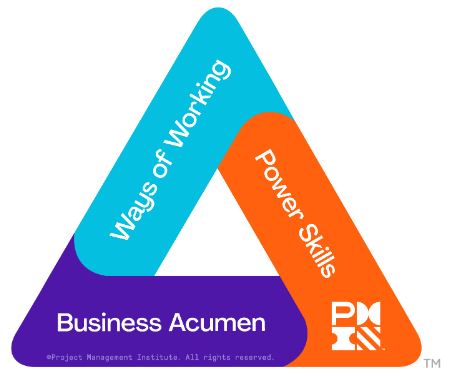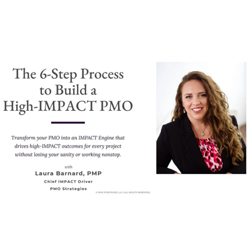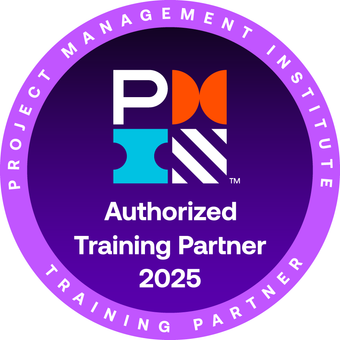Welcome to the PMO Strategies Podcast + Blog, where PMO leaders become IMPACT Drivers!

PMI Talent Triangle: Business Acumen (Strategic and Business Management)
 I built my first PMO in the 90s (yes, in the last century!) and the truth is that I had no idea what I was doing! BUT, I had a Get. It. Done. attitude and a desire to learn and boy did I learn! A lot. I made a lot of mistakes and I learned a thing or two over the following two decades of putting PMOs and PM best practices in place. Now that I teach and coach others the art of successful project management and PMO implementation, I am seeing some of the same mistakes I used to make when I was first starting out. I see PMOs that had a real chance of success getting bogged down in the not so important, while opportunity passes them by (as does their next promotion). While there are many things we can do wrong, there are MANY MORE things we CAN do right. Here are the top ten mistakes I wish I had known to avoid when I was in your shoes (and most importantly, what to do about it). I hope this saves you from learning the hard way, as I often did.
I built my first PMO in the 90s (yes, in the last century!) and the truth is that I had no idea what I was doing! BUT, I had a Get. It. Done. attitude and a desire to learn and boy did I learn! A lot. I made a lot of mistakes and I learned a thing or two over the following two decades of putting PMOs and PM best practices in place. Now that I teach and coach others the art of successful project management and PMO implementation, I am seeing some of the same mistakes I used to make when I was first starting out. I see PMOs that had a real chance of success getting bogged down in the not so important, while opportunity passes them by (as does their next promotion). While there are many things we can do wrong, there are MANY MORE things we CAN do right. Here are the top ten mistakes I wish I had known to avoid when I was in your shoes (and most importantly, what to do about it). I hope this saves you from learning the hard way, as I often did.
- Suffering from “Me Too” Syndrome
Your execs go off to a conference or read an article and next thing you know, “we have to do that because everyone else is.” Sound familiar? Yeah, well, just because everyone else is doing it doesn’t mean it is going to make the most sense for you. You better be crystal clear on exactly what business problem you are trying to solve if you are going to make the time, money, and energy investment worth it. For more on this topic, check out Why do PMOs exist?
- Getting Caught Up in PMO Types or Maturity
Sadly, many PMO leaders start building a PMO and putting templates and processes in place before they figure out what services will actually get the biggest bang for the buck in the organization. This is even more likely if this isn’t your first PMO. You have some experience, you know what worked before, and you want to leverage that expertise to guide your organization through this PMO journey. Don’t do it! You must figure out what your customers need help with first. You must identify the pain points that you and your PMO can solve. Then DO THAT first. Start with asking the right questions. Are you going to provide project management support? Will you provide governance and portfolio oversight? Do they need coaching of PMs that aren’t reporting to the PMO? Think about who you want to be when you grow up…do you want to be the policing organization that everyone fears, or that my friend Lee Lambert calls the PMO Gestapo, or do you want to be the support organization that everyone turns to when they need to Get. It. Done? There’s also a problem with maturity models. Every PMO is different and climbing an artificial scale of predetermined PMO value that doesn’t align with your stakeholders’ needs is a waste of time. Every PMO is unique and more is not better. Sometimes what you really need to do to provide value is do LESS and maturity models are all about more and more structure and process that may be unnecessary. The key is to solve the business problems and evolve your PMO services and capabilities as the needs of your organization evolve. For more on this topic, check out 4 Questions to Ask When Starting a PMO.
- Blaming the culture
It’s very easy to say the reason your PMO isn’t working is because you don’t have the support or people don’t “get it” and it’s not your fault. It feels like you just keep pushing that boulder up the hill and it keeps rolling back down. I totally get it. I’ve lived that slow and agonizing nightmare of change resistance around every corner. What I learned, however, was to focus on what I could control and the rest would come along…eventually. Yes, you must practice patience, but even more importantly, we must learn how to do change WITH people instead of TO them. People are not resistant to change. They are resistant to change being DONE TO them. So, next time you feel like you can’t get the support you need on your project, look at what you could do to bring people (as partners) with you through the process, including their insights and ideas along the way. For more on this topic, check out People are NOT Resistant to Change.
- Measuring the wrong things
As a PM or PMO leader, your job is to drive business results and create value and IMPACT for the organization. You are NOT there because they want more templates or tools. You are there because they want a greater return on the investment they are making in their projects. Projects are costing too much, taking too long, or failing to deliver the value intended. Solve. That. Problem. From this point forward, you are no longer a PMO leader or project manager. Think of yourself as an investment manager for the organization. Because you are. They have given you some of their investment dollars (a.k.a. budget) to complete a project that will achieve some value or outcome for the organization that is worth more to them than the original investment of time, money and resources. It is your fiduciary responsibility to optimize the spend and get the greatest return on that investment possible. That means you need to be focused on more than the triple constraint. Earned Value Measurement will only take you so far. EVM will tell you how your budget and schedule are performing, but won’t tell you a darn thing about actual VALUE achieved. Did the revenue we expected to gain or the expense reduction we expected to see happen? THAT is what the business wants to know. THAT is what the business is asking you deliver. For more on this topic, check out EVM is NOT Enough.
- Methodology abuse
When first tasked with building out PM capability, what’s the first thing most people do? They start building process and templates or start redesigning what’s already there to make sure it’s more “holistic.” We then spend months (or years) building out templates and process and then trying desperately to educate everyone on our methodology we are so proud of, all while they run and hide. What’s worse is that we have spent precious time using company resources to build things yet we haven’t delivered any value yet. I know, you feel like all those templates will provide value, but all your leadership and stakeholders see is that they invested in you a year ago and not one project has gotten done better, faster, or cheaper since. Instead of spending time focusing on perfecting that methodology, go get something done! Find a team or a project you can help improve and then do that. Quickly. Then another, then another. This will help you more clearly define the need/gap you can fill and test out your services…all before you have spent a year building templates and process that may not actually serve you well once you see the services you should implement. And if you already have best practices and process in place. Your job, today, not next week or next year, is to start simplifying it! Make lives easier. Make it easier to get things done. You do this and you become an invaluable asset to the organization. For more on this topic, check out The Problem with Process.
- Tools gone wild
When I start with a new client and I’m helping to setup an IT PMO (or an IT leader is leading the charge), I can almost guarantee they will have purchased a tool before they’ve even engaged me. Inevitably, they start implementing a tool and meet such change resistance with their stakeholders that the entire PMO future hangs in the balance. Tools are the last step in the process, not the first. You must figure out what business problems you are solving, what services you are going to provide, make sure your stakeholders all understand the fundamentals of project management and how to engage properly in the process, then you can start putting a tool in place that meets the needs of the stakeholders. You should embrace technology as a way to automate the admin you and your team are doing so that you can shift your focus to more value-driven activities, just do it AFTER you’ve determined the business-driven services your PMO will provide and you’ve streamlined them as much as possible. That way, you avoid automating a broken process. For more on this topic, check out Stop Playing with Toys.
- Missing the marketing
Make sure that you are telling the story of the value you are creating with your PMO. Recognize and celebrate the wins publicly. Tie the project completion to the value and impact your PMO was responsible for creating. Just make sure you are doing it in the language that the business understands. Talk about the business problems you are solving. Talk about the transformation that is taking place. Make it real for people. And make sure to have a set of key metrics that ties PMO success to the success of the value and impacts you are creating. Make sure it’s outcome focused. If you don’t own the message, others will tell their own story about what the PMO is and should be doing and it may not be the message you want sent. You must own that story of IMPACT. For more on this topic, check out Telling the PMO Story.
- Burying stakeholders in reporting
If your sponsor has ever gotten stuck on the bottom of page 4 on some element of your status report and you can’t get them to refocus on the action or decision you need from them before the top of the hour, then you need to right-size your reporting. Doing too much of the wrong communication or spending countless hours on meaningless and time-consuming reporting will prevent you from spending your time on delivery. Think about every document you create, every report you produce and every meeting you attend or schedule. Every bit of communication should be tied to value and outcomes you can create. If not, stop doing it. No one needs to hear for the third time this week how Joe is doing on his piece of the project. For more on this topic, check out Communications Your Sponsor will LOVE.
- Sponsor abuse
We expect a lot from our sponsors (and should), but often we do so without understanding how to best support them so that they can support us. We also assume our sponsors actually know how to be good sponsors. Many of them don’t. If your sponsor isn’t engaged or you can’t get them to make decisions, then it’s time to TRAIN THEM on the role and what we expect from them. Start by figuring out their WIIFM (what’s in it for me) and how they will benefit when this project is successful (and how much pain they will be in if it’s not). Then we need to set expectations with them, starting with how you will support them and how you will be working to ensure their success (according to that WIIFM). Then, you can start asking for what you need from them. Use their power for good (not evil) to get their peer to make that resource you need available, but be careful not to dilute your own power by saying “sponsor said” when you need cooperation from staff. For more on this topic, check out How to Train Your Sponsor.
- Misusing talent
I always looked for help when I was tasked with starting a PMO. I needed staff to help me with ideas and to execute our plans and I needed advisors to provide me a sanity check or guide me in the best way to get the PMO up and running quickly. What I learned is what works in one place, may not work so well in another. It’s all about finding the right team and then doing this change together. Make sure you don’t bring in all your own people. They are likely to have the same mindset and ideas you have, which will limit your diversity in thinking and idea generation. They may also have the same blind spots and weaknesses. Diversity is king here, which means you will need to learn to adjust your management style to each individual personality. 🙂 Sometimes we bring in consultants and then let them “do” the project management or PMO implementation for us. Don’t do it. Please, don’t. I’m not saying you cannot have temporary staff (a.k.a. contractors) performing project management for you. That’s fine. But if you completely outsource your PMO setup, you will either have to make those people permanent or the “life” of your PMO leaves when they walk out the door. You must ingrain the changes you want into the culture and behaviors of the people that will be around for the long haul. Make sure you find yourself the kind of consulting team that will teach you and the organization to fish instead of doing the fishing for you. They will help you build that internal competency and be a partner to you along the way, strategically encouraging the weaning process as soon as you can fish for yourself. For more on this topic, check out The PMO Talent Profile and Why You Shouldn’t Outsource Your PMO.

Want to learn about Laura’s proven 6-Step System for Building and Running a High-IMPACT PMO?
Register for our free masterclass here!
 Hey there, IMPACT Driver!
Hey there, IMPACT Driver!
Thanks for taking the time to check out our podcast and blog.
I welcome your feedback and insights!
I’d love to know what you think and if you love it, please leave a rating and review in your favorite podcast player.
You can also complete this survey to tell us more about you and get my advice on how to take your next steps toward high-IMPACT!
Warmly,
Laura Barnard









Laura – thanks for writing this. Great points that read like they are from real experiences – I recognize many myself :-). And linking out to longer articles is really helpful.
I’m so glad you found value in this post. It was a favorite for me to write. I have experienced many of these things myself over the years and I love to share my lessons learned with others so that they don’t have to go through the same things! Enjoy and please let me know what else you want to read more about!
[…] Top 10 Mistakes PMO/PM Leaders Make (and how to fix them) In this popular article, I dive into the top 10 mistakes I see happening every day and exactly how to fix them, fast. I built my first PMO in the 90’s and the truth is that I had no idea what I was doing! BUT, I had a Get. It. Done. attitude and a desire to learn and boy did I learn! A lot. I made a lot of mistakes and I learned a thing or two over the following two decades of putting PMOs and PM best practices in place. You will find the solution in this article. (And for a more in-depth look, I recently did a training over the Top 10 Mistakes PMO/PM Leaders make, you can get that here.) […]
[…] Top 10 Mistakes PMO / PM Leaders are Making (and how to solve them TODAY) […]